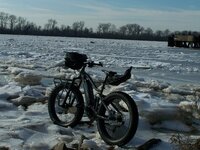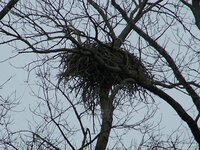Like some others have commented, I'm not sure about my limits on air temperature yet, but I am pretty sure about surface conditions. I'm not going out on ice, which we tend to get a lot of here. I suspect, with the riding gear I have at present, that I'll be comfortable to about -5 or -6 C, which is around 20F.
It's got to be fun, otherwise I'll grind away on the stationary bike downstairs. In years past I tended to put my bike away at the beginning of November, but with the new e-MTB, I'm more inclined to get out there and try it out.
We get a weather phenomenon here called a "Chinook", which is a warm wind that comes over the Rockies and warms things up, sometimes dramaticly. 2 hours south of here, in a place called Pincher Creek, it caused the temps to go from -19C to +22C in ONE hour. That was in 1962 and we often get fluctuations of 20C day to day here. It sure plays havoc with roads and for many unfortunate souls, their health.
I think a lot of Western American cities, like Denver, experience similar. Of course regional wind driven weather is nothing new, but ours here can make it interesting...and will likely enable more winter cycling.













